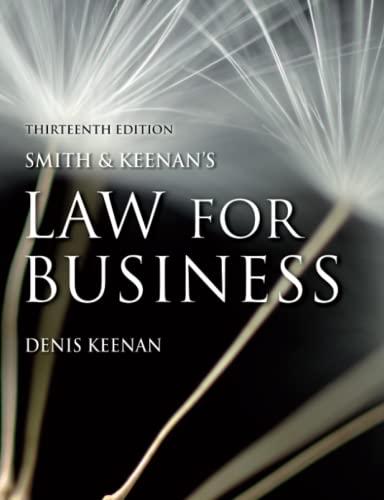Question
Terry v. Ohio (1968) Summary of the case: A Cleveland detective named McFadden observed two men, Terry and Chilton, walking back and forth along an
Terry v. Ohio(1968)
Summary of the case:
A Cleveland detective named McFadden observed two men, Terry and Chilton, walking back and forth along an identical path and stopping to stare inside the same store window. They did this no fewer than two dozen times. Detective McFadden suspected the pair of "casing" the store for a possible armed robbery. McFadden approached the pair, identified himself as a police officer, and asked their names. The men mumbled an obscene remark, at which point McFadden spun Terry around and "patted down" his outer clothing. Then the detective located a pistol in Terry's outside coat pocket, but he was not able to remove it. He then ordered both men inside the store where he "patted down" the other man and found a pistol on him also. The men were taken to the police station and were charged with carrying concealed weapons. The attorney for Terry said the weapon was unlawfully obtained evidence.
Answer the following questions, using the textbook and/or course resources to support your position:
- Do you think the detective had a right to stop the men? To frisk them? Would it make any difference if the men had each walked by the store three times? Once?
- List the factors that might have indicated to the detective that there was "reason to suspect an unlawful plan" List the factors that may have led the detective to believe that his suspicion of criminal intent and possible danger was reasonable.
- Are there any differences between "stop and frisk" and "search and seizure"? If so, what are the differences?
Step by Step Solution
There are 3 Steps involved in it
Step: 1

Get Instant Access to Expert-Tailored Solutions
See step-by-step solutions with expert insights and AI powered tools for academic success
Step: 2

Step: 3

Ace Your Homework with AI
Get the answers you need in no time with our AI-driven, step-by-step assistance
Get Started


